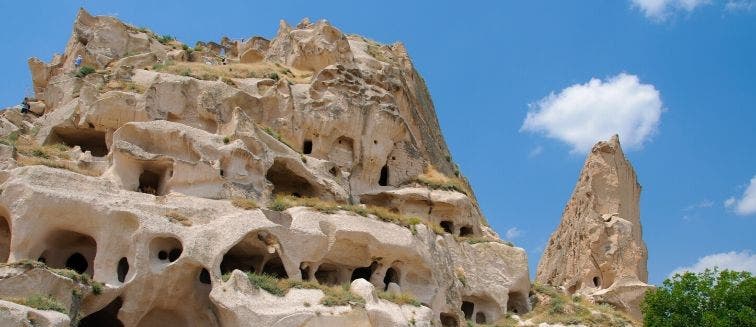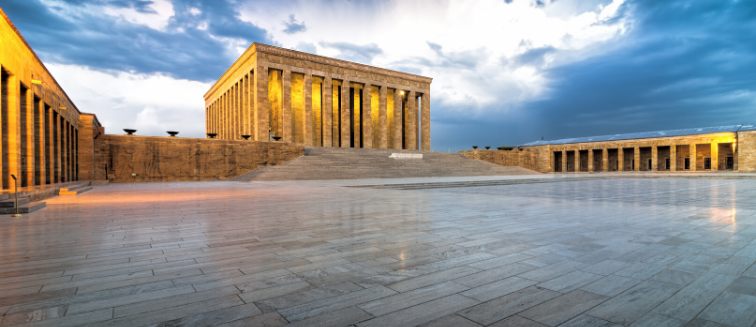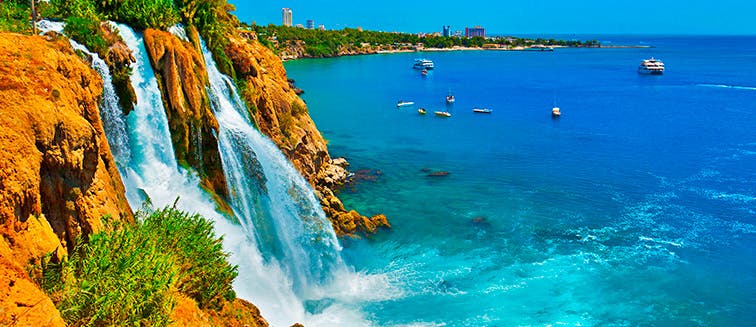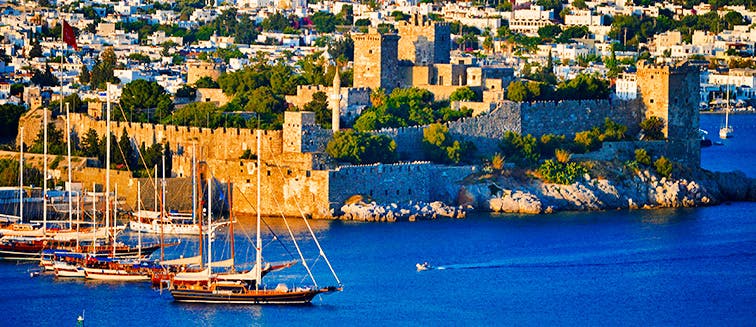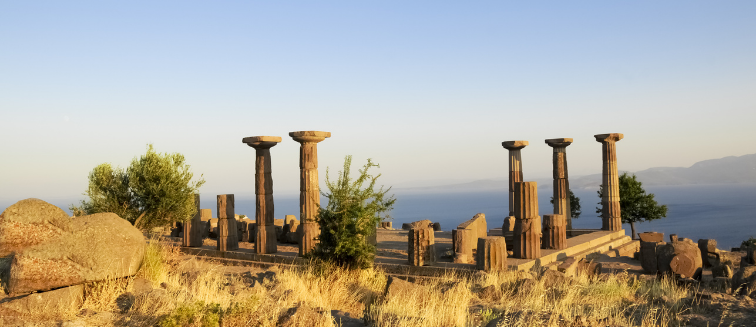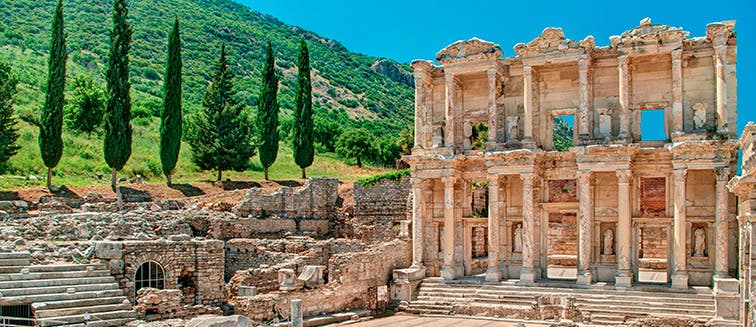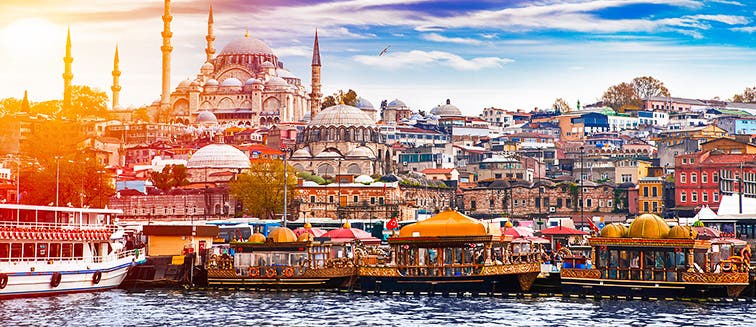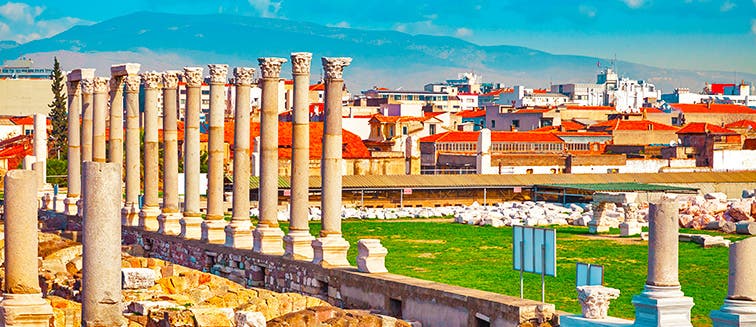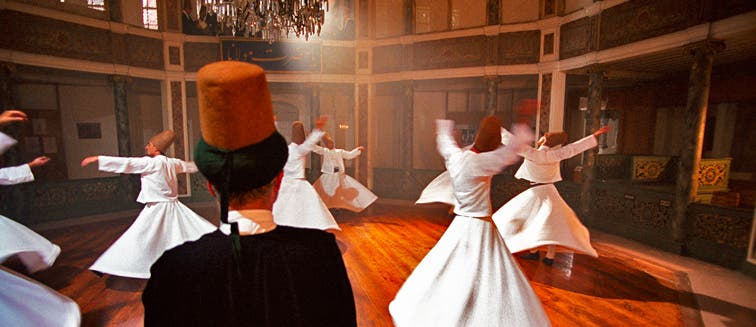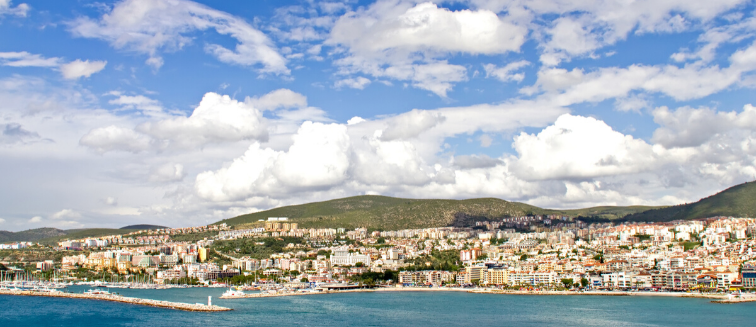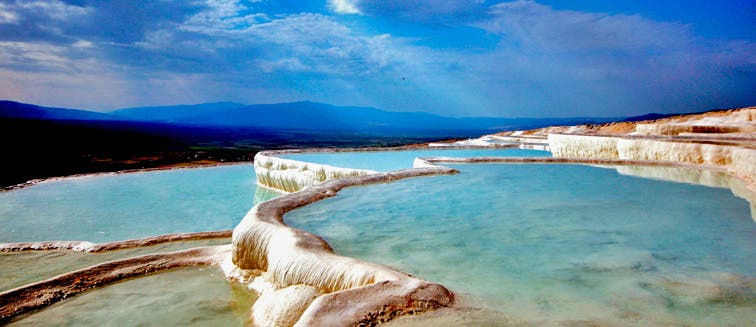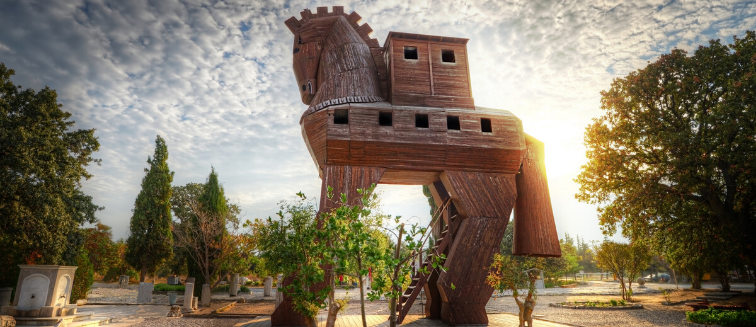Africa
Americas
Asia
Europe
Oceania
Holidays to Europe (97 available)
Albania(2)
Austria(7)
Baltic States(3)
Belgium(5)
Croatia(3)
Cyprus(1)
Czech Republic(5)
Denmark(1)
England(12)
Finland(2)
France(15)
Germany(8)
Greece(12)
Hungary(5)
Iceland(6)
Ireland(9)
Italy(13)
Montenegro(1)
Netherlands(5)
Northern Ireland(2)
Norway(9)
Portugal(9)
Romania(1)
Scotland(6)
Slovakia(1)
Spain(9)
Sweden(2)
Switzerland(4)
By Season
By Interest
By Group
What to see in Turkey
Kaymakli Underground City
Tourist attractions Kaymakli Underground City
One of Cappadocia’s largest underground cities and most captivating attractions, the labyrinthine maze of subterranean caves and passages that make up Kaymakli Underground City offer a keyhole into the hidden world of Turkey’s ancient troglodyte communities. Thought to date back to Hittite times, it is thought to have housed more than 3000 inhabitants at its peak and, over the centuries, the underground complex has been expanded, spanning across 8 storeys deep underground.
Throughout the conflicts waged across Europe and Asia, persecuted communities, namely Christians, found shelter in this underground city and used it to hide safely from their persecutors. Visitors who take a trip to Kaymakli Underground City today, which is easily accessible from Göreme, can access only 4 levels but the effect is still breathtaking. Kaymakli is a masterpiece of early rock architecture, carved deep into the soft volcanic earth. Comprised within this mind-bending subterranean world are wineries, stables, dwellings, a church, kitchens and storage rooms, some of which are still used by locals of Kaymakli today.
Archaeologists have also uncovered an impressive tunnel system which links the underground city of Kaymakli with Derinkuyu, 9 kilometres away. If you visit Kaymakli Underground City you’ll find it to be well lit and fairly accessibility, making it less claustrophobic than over cave complexes in the region. Each of the four floors is organised around ventilation shafts and taking a guided tour of Kaymakli is the best way to learn about the different sections and the way of the life of its ancient inhabitants, who are thought to have abandoned the site in around the 14th-century, although Cappadocian Greeks may have used the caves intermittently to take refuge during waves of Ottoman persecution in the early 20th-century.
OUR BEST TRIPS TO KAYMAKLI UNDERGROUND CITY
YOU ALSO LIKE
Armenia
Notify me when available
Bahrain
1 Trips
Israel
Notify me when available
Jordan
6 Trips
Kazakhstan
1 Trips
Kyrgyzstan
Notify me when available
Lebanon
Notify me when available
Oman
Notify me when available
Qatar
4 Trips
Turkey
9 Trips
Uzbekistan
2 Trips
Cambodia
4 Trips
Thailand
6 Trips
Vietnam
6 Trips
Myanmar
Notify me when available
Indonesia
8 Trips
Malaysia
2 Trips
Philippines
2 Trips
Singapore
2 Trips
Laos
Notify me when available
India
10 Trips
Bhutan
2 Trips
Nepal
5 Trips
Sri Lanka
5 Trips
Maldives
6 Trips
United Arab Emirates
4 Trips
Saudi Arabia
2 Trips
China
3 Trips
Japan
9 Trips
Hong Kong
1 Trips
South Korea
6 Trips
Tibet
Notify me when available
Mongolia
Notify me when available
Taiwan
Notify me when available
Tourist attractions turkey
Points of interests
- Trips to Ankara
- Trips to Antalya
- Trips to Bodrum
- Trips to Çanakkale
- Trips to Cappadocia
- Trips to Éfeso
- Trips to Istanbul
- Trips to Izmir
- Trips to Kaymakli Underground City
- Trips to Konya
- Trips to Kusadasi
- Trips to Pamukkale
- Trips to Troy
Other Points of interests
- Trips to Ajloun Castle
- Trips to Almaty
- Trips to Amman
- Trips to Aqaba
- Trips to Beirut
- Trips to Beit She'an
- Trips to Bishkek
- Trips to Bukhara
- Trips to Caesarea
- Trips to Dana Nature Reserve
- Trips to Dead Sea
- Trips to Dead Sea
- Trips to Doha
- Trips to Galilee
- Trips to Garni
- Trips to Haifa
- Trips to Isfahan
- Trips to Jerash
- Trips to Jericho
- Trips to Jerusalem
- Trips to Karakol
- Trips to Katara Cultural Village
- Trips to Khiva
- Trips to Khor-Virap
- Trips to Lake Sevan
- Trips to Little Petra
- Trips to Manama
- Trips to Mount Nebo
- Trips to Muscat
- Trips to Nizwa
- Trips to Noravank
- Trips to Nur-Sultan
- Trips to Pasargada
- Trips to Persepolis
- Trips to Petra
- Trips to Ras al Hadd
- Trips to Red Sea
- Trips to Safed
- Trips to Samarkand
- Trips to Shiraz
- Trips to Souq Waqif
- Trips to Tashkent
- Trips to Tehran
- Trips to Tel Aviv
- Trips to Temple Mount
- Trips to The Corniche
- Trips to The Pearl-Qatar
- Trips to Vagharshapat
- Trips to Wadi Rum
- Trips to Wahiba Sands
- Trips to West Bay
- Trips to Yadz
- Trips to Yerevan
Countries Nearby
- Armenia Trips
- Bahrain Trips
- Bhutan Trips
- Cambodia Trips
- China Trips
- Hong Kong Trips
- India Trips
- Indonesia Trips
- Israel Trips
- Japan Trips
- Jordan Trips
- Kazakhstan Trips
- Kyrgyzstan Trips
- Laos Trips
- Lebanon Trips
- Malaysia Trips
- Maldives Trips
- Mongolia Trips
- Myanmar Trips
- Nepal Trips
- Oman Trips
- Philippines Trips
- Qatar Trips
- Saudi Arabia Trips
- Singapore Trips
- South Korea Trips
- Sri Lanka Trips
- Taiwan Trips
- Thailand Trips
- Tibet Trips
- Turkey Trips
- United Arab Emirates Trips
- Uzbekistan Trips
- Vietnam Trips
Trip Styles
- Solo Tours in China Trips
- China Cultural Tours Trips
- Family India Trips
- India Solo Travel Offers Trips
- India Nature Vacation Packages Trips
- Solo Trips to Indonesia Trips
- Indonesia Couples Tour Packages Trips
- Indonesia Nature Vacation Packages Trips
- Family Japan Trips
- Japan Solo Travel Packages Trips
- Japan Cultural Tours Trips
- Solo Adventures in Jordan Trips
- Thailand Nature Packages Trips
- Family Thailand Trips
- Thailand Tours for Couples Trips
- Thailand Solo Tours with Exoticca Trips
- Turkey Cultural Tours Trips
- Turkey: A Romantic Haven for Couples Trips
- Vietnam Solo Travel Packages Trips
- Vietnam Nature Vacation Packages Trips
- Vietnam Cultural Tours Trips
Susbscribe to our newsletter and join Exoticca GO
The best travel deals
Exclusive promotions
Expert travel tips
